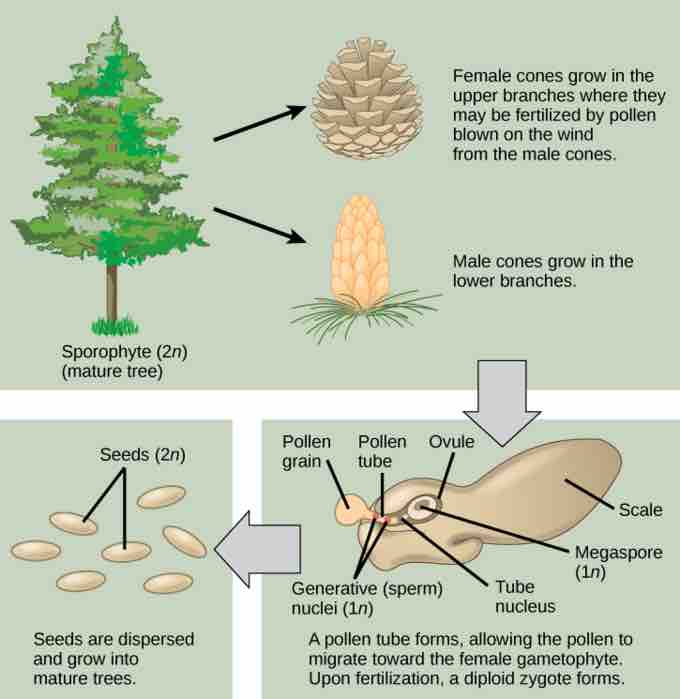Life Cycle of a Conifer
Pine trees are conifers (cone bearing) and carry both male and female sporophylls on the same mature sporophyte. Therefore, they are monoecious plants. Like all gymnosperms, pines are heterosporous, generating two different types of spores: male microspores and female megaspores. In the male cones (staminate cones), the microsporocytes give rise to pollen grains by meiosis. In the spring, large amounts of yellow pollen are released and carried by the wind. Some gametophytes will land on a female cone. Pollination is defined as the initiation of pollen tube growth. The pollen tube develops slowly as the generative cell in the pollen grain divides into two haploid sperm cells by mitosis. At fertilization, one of the sperm cells will finally unite its haploid nucleus with the haploid nucleus of an egg cell.
Female cones (ovulate cones) contain two ovules per scale. One megaspore mother cell (megasporocyte) undergoes meiosis in each ovule. Three of the four cells break down leaving only a single surviving cell which will develop into a female multicellular gametophyte. It encloses archegonia (an archegonium is a reproductive organ that contains a single large egg). Upon fertilization, the diploid egg will give rise to the embryo, which is enclosed in a seed coat of tissue from the parent plant. Fertilization and seed development is a long process in pine trees: it may take up to two years after pollination. The seed that is formed contains three generations of tissues: the seed coat that originates from the sporophyte tissue, the gametophyte that will provide nutrients, and the embryo itself.
In the life cycle of a conifer, the sporophyte (2n) phase is the longest phase. The gametophytes (1n), microspores and megaspores, are reduced in size. This phase may take more than one year between pollination and fertilization while the pollen tube grows towards the megasporocyte (2n), which undergoes meiosis into megaspores. The megaspores will mature into eggs (1n) .

Life cycle of a conifer
This image shows the life cycle of a conifer. Pollen from male cones moves up into upper branches where it fertilizes female cones.